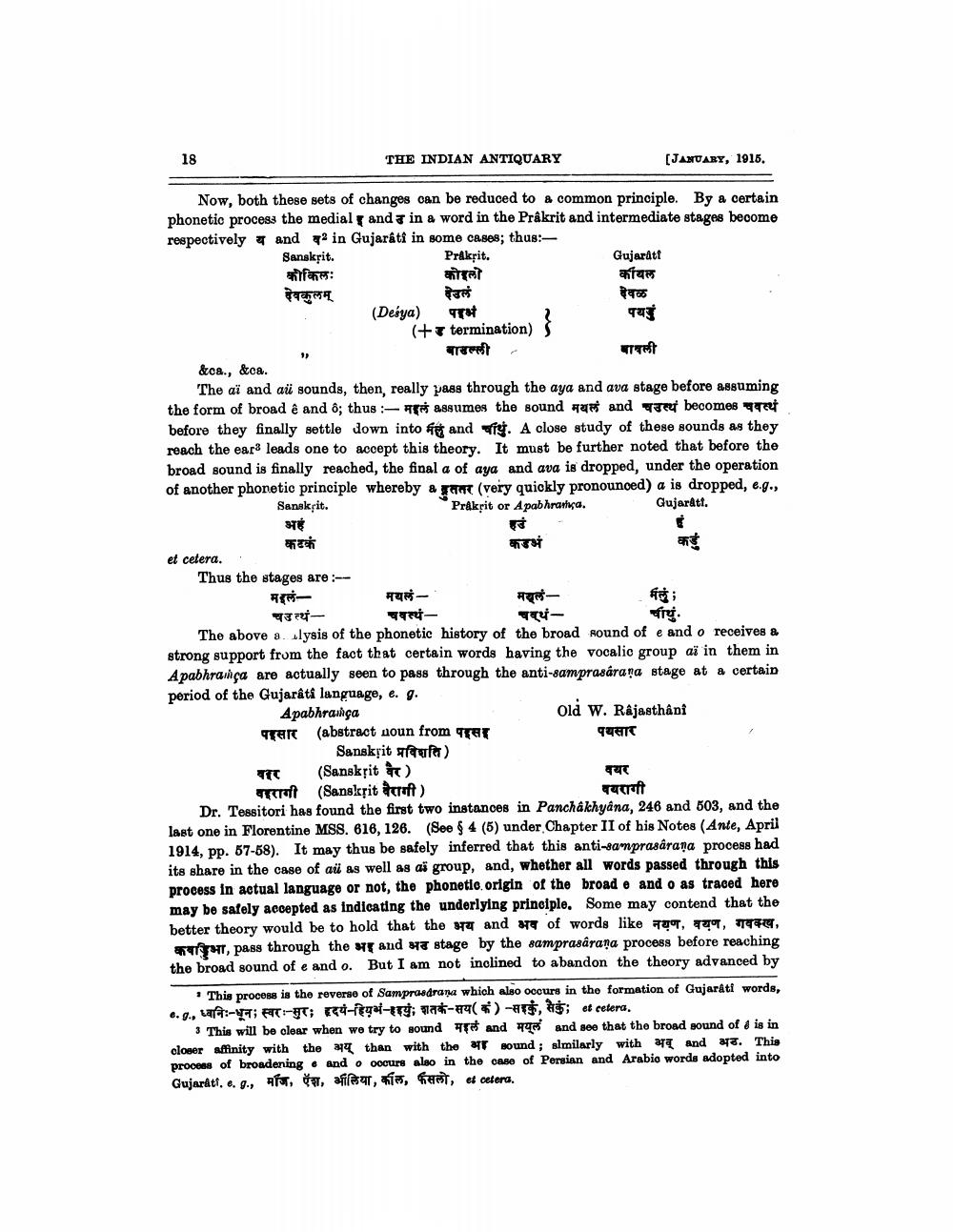________________
पावली
18 THE INDIAN ANTIQUARY
[JANUARY, 1915. =
Now, both these sets of changes can be reduced to a common principle. By a certain phonetic process the medial and 7 in a word in the Prâkrit and intermediate stages become respectively 4 and 7 in Gujarati in some cases; thus: Sanskrit. Prakrit.
Gujarati ain: कोइलो
कायल देवकुलम् देउलं
देवळ (Desya) TT
पथर्ड (+7 termination)
teret &ca., &ca.
The aï and ai sounds, then, really pass through the aya and ava stage before assuming the form of broad é and 8; thus - assumes the sound and we becomes greut before they finally settle down into fit and is. A close study of these sounds as they reach the ear: leads one to accept this theory. It must be further noted that before the broad sound is finally reached, the final a of aya and ava is dropped, under the operation of another phonetic principle whereby a GR (very quickly pronounoed) a is dropped, e.g., Sanskçit. Prakrit or A pabhrana.
Gujarati. अहं कटकं
कडों et cetera. Thus the stages are :--
- FOR
-
frei -
- The above a. lysis of the phonetic history of the broad sound of e and o receives a strong support from the fact that certain words having the vocalic group až in them in A pabhraica are actually seen to pass through the anti-samprasarana stage at a certain period of the Gujarati language, e. g. Apabhraica
Old W. Rajasthani पहसार (abstract noun from पइसा
पथसार Sanskrit प्रविशति) वर (Sanskrit वैर)
वयर Kraft (Sanskțit croft)
वबरागी Dr. Tessitori has found the first two instances in Panchakhyana, 246 and 503, and the last one in Florentine MSS. 616, 126. (See § 4 (5) under Chapter II of his Notes (Ante, April 1914, pp. 57-58). It may thus be safely inferred that this anti-samprasarana process had its share in the case of aü as well as a group, and, whether all words passed through this process in actual language or not, the phonetic origin of the broade and o as traced here may be safely accepted as indicating the underlying principle. Some may contend that the better theory would be to hold that the 2 and 3 of words like TYT, YT, TU,
o, pass through the wy and stage by the samprasarana process before reaching the broad sound of e and o. But I am not inclined to abandon the theory advanced by
* This process is the reverse of Samprasarana which also occurs in the formation of Gujarati words, ..., - - ; -feat-try; *- *) , 255; et cetera.
3 This will be cloar when we try to sound and he and see that the broad sound of 4 is in closer affinity with the 244 than with the sound ; almilarly with art and 78. This process of broadening and docurs also in the case of Persian and Arabio words adopted into Gujardt, . ., Afor, affer, wia, funt, et cetera.
sfru.




